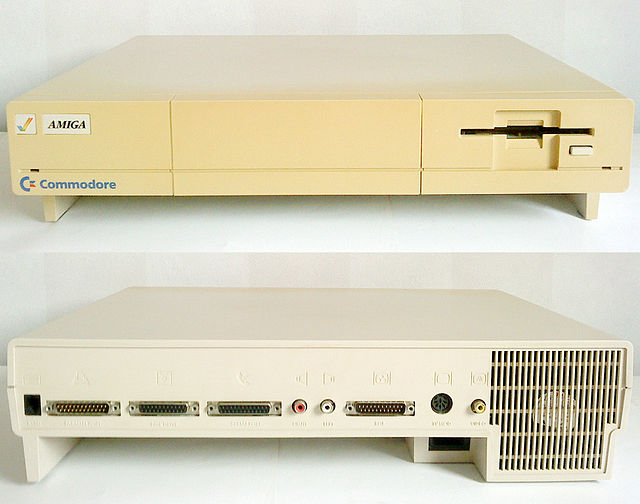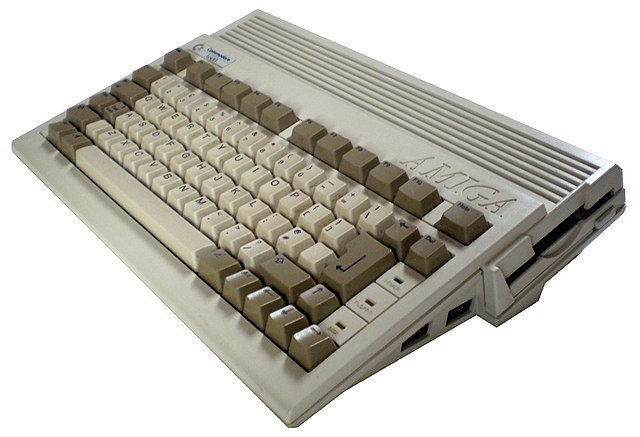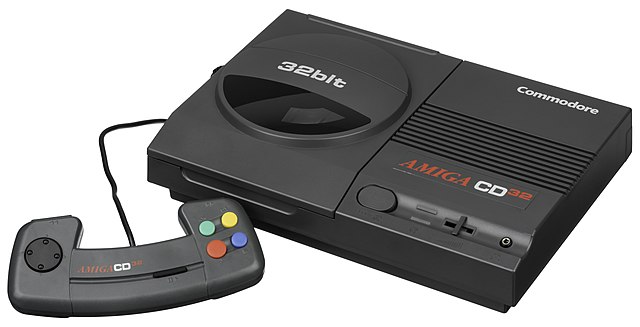The Amiga 500, also known as the A500, was the first popular version of the Amiga home computer, "redefining the home computer market and making so-called luxury features such as multitasking and colour a standard long before Microsoft or Apple sold these to the masses". It contains the same Motorola 68000 as the Amiga 1000, as well as the same graphics and sound coprocessors, but is in a smaller case similar to that of the Commodore 128.
A500 with 1084S monitor and Amiga 1010 external second floppy drive
Base of the Amiga 500 Plus, with the Italian variant of the keyboard
The standard Amiga 500 requires floppies to boot.
The Amiga 520 adapter allows for an RF modulated output to be connected to a TV, or composite output to a monitor.
Amiga is a family of personal computers introduced by Commodore in 1985. The original model is one of a number of mid-1980s computers with 16- or 16/32-bit processors, 256 KB or more of RAM, mouse-based GUIs, and significantly improved graphics and audio compared to previous 8-bit systems. These systems include the Atari ST—released earlier the same year—as well as the Macintosh and Acorn Archimedes. Based on the Motorola 68000 microprocessor, the Amiga differs from its contemporaries through the inclusion of custom hardware to accelerate graphics and sound, including sprites and a blitter, and a pre-emptive multitasking operating system called AmigaOS.
The 1987 Amiga 500 was the bestselling model.
Amiga 1000 front and back
Amiga 600
CD32







